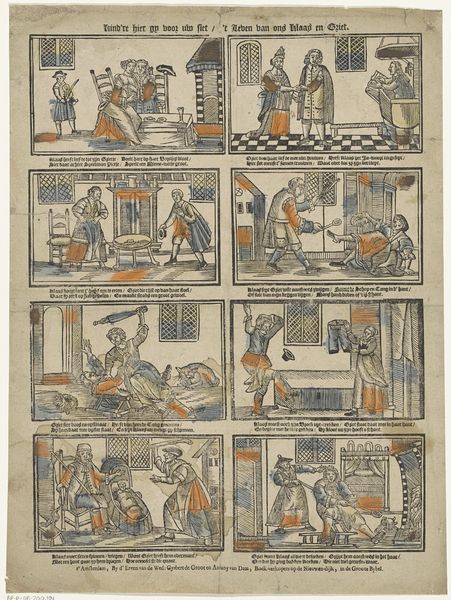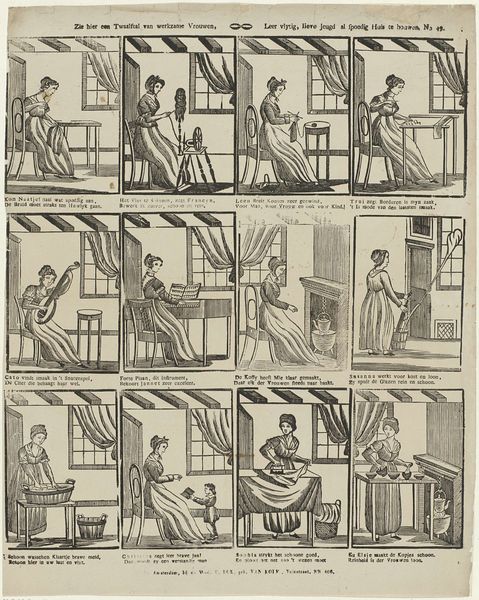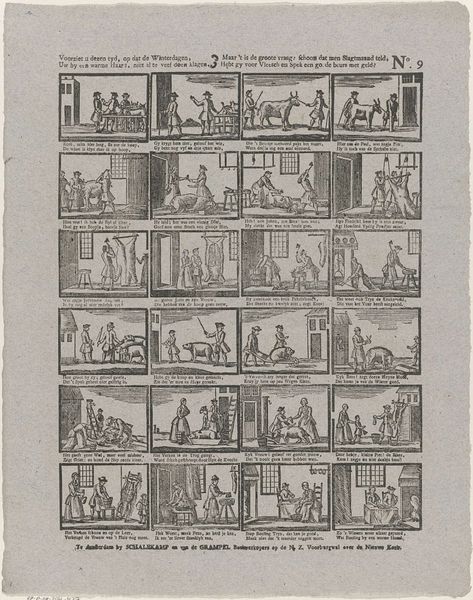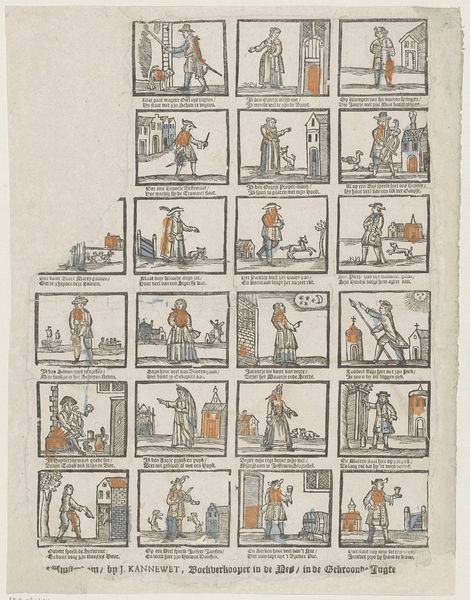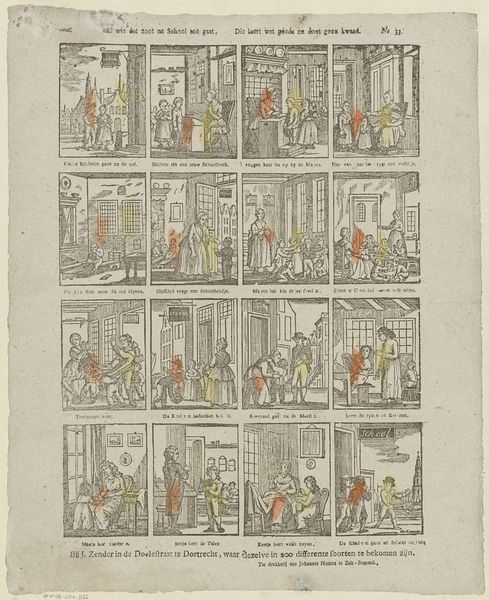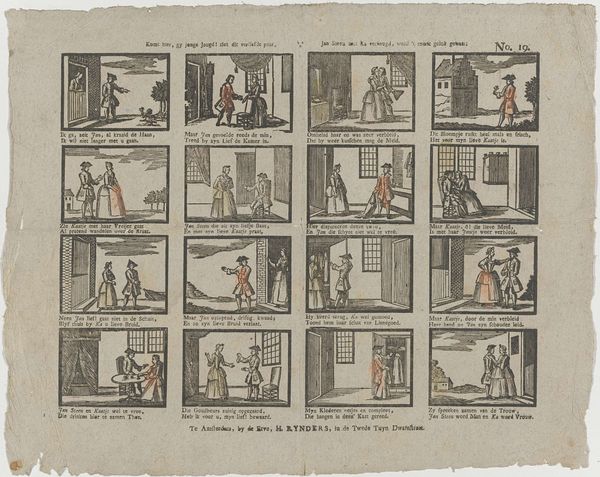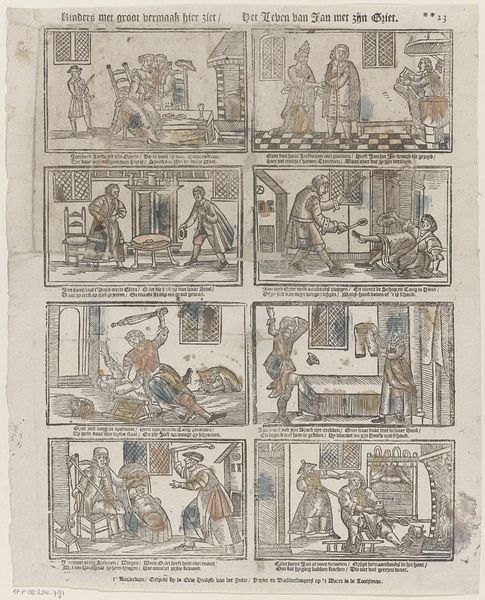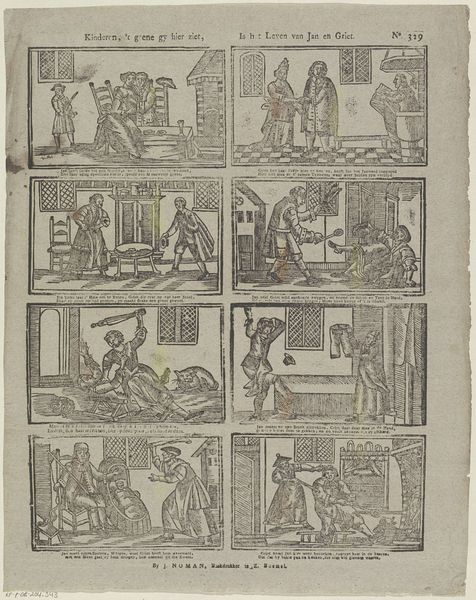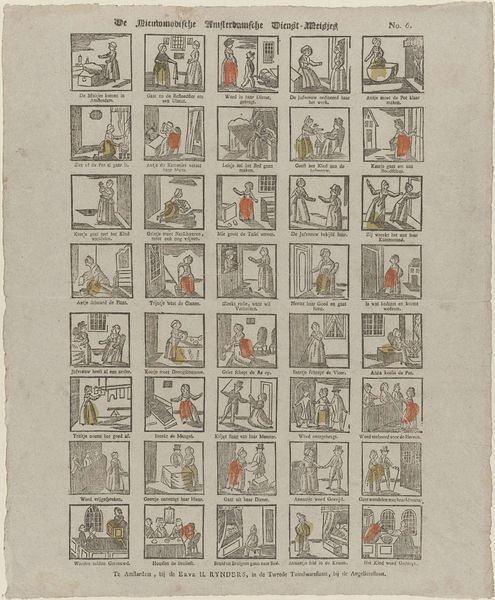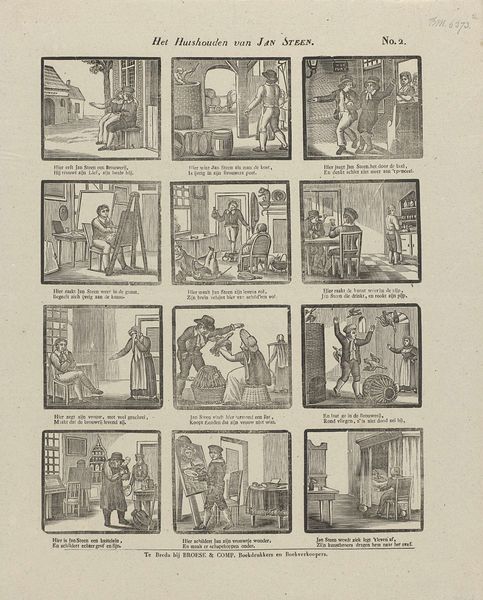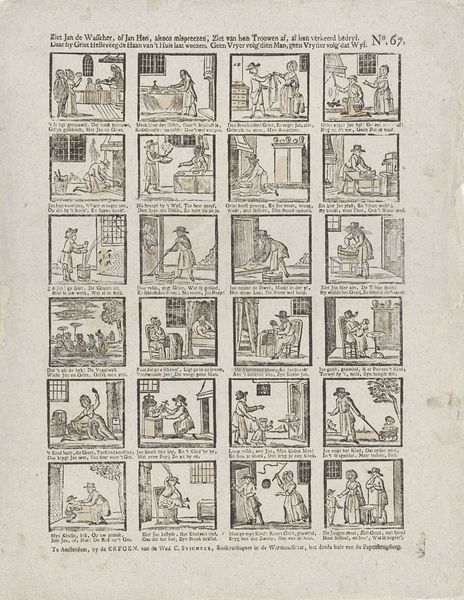
Zie hier een Twaalftal van werkzame Vrouwen, Leer vlytig, Jonge Jeigd! al spoedig Huis te houwen 1830 - 1855
0:00
0:00
graphic-art, print, engraving
#
graphic-art
#
narrative-art
#
dutch-golden-age
# print
#
genre-painting
#
engraving
Dimensions: height 420 mm, width 337 mm
Copyright: Rijks Museum: Open Domain
Editor: Here we have "Zie hier een Twaalftal van werkzame Vrouwen, Leer vlytig, Jonge Jeigd! al spoedig Huis te houwen," an engraving by Erve H. Rynders, created sometime between 1830 and 1855. It depicts twelve scenes of women engaged in various domestic tasks. It almost feels like a sampler. What's striking is the organization – almost like a comic strip about idealized womanhood. How do you interpret this work within its historical context? Curator: That’s an excellent observation! Seeing it as a kind of early comic strip highlights the burgeoning print culture and its role in shaping social expectations. Consider how these images would circulate; these weren’t destined for museum walls. They were affordable, mass-produced, likely pasted into books or displayed in homes. The title itself underscores its didactic purpose: teaching young women the skills needed for "housekeeping," almost literally spelling it out to them. The "Dutch Golden Age" style, though past its peak by the 19th century, carried an ideological weight, evoking a sense of national pride and moral virtue connected with home life. How might the rise of industrialization factor into its message? Editor: That’s interesting! It makes me wonder if it's pushing back against industrialization by idealizing the domestic sphere. Were women feeling pressure to maintain traditional roles despite societal shifts? Curator: Precisely. As work began to move outside the home, prints like this served to reinforce and romanticize the domestic role of women. They weren't just teaching skills, they were upholding a specific social order. The image becomes a political statement, defining womanhood in relation to household labor and familial duty. Do you notice any differences in status represented between the scenes? Editor: Hmmm… I didn't notice it initially, but in some panels they seem wealthy and some seem poorer based on clothing and interiors? Curator: Exactly. The print both reinforces gender norms but subtly hints at class differences too. It highlights how expectations of women aren’t monolithic. Editor: It is so useful to learn how even seemingly straightforward images are entangled with culture. Curator: Indeed. And in the realm of art, these narratives constantly reveal insights.
Comments
No comments
Be the first to comment and join the conversation on the ultimate creative platform.
